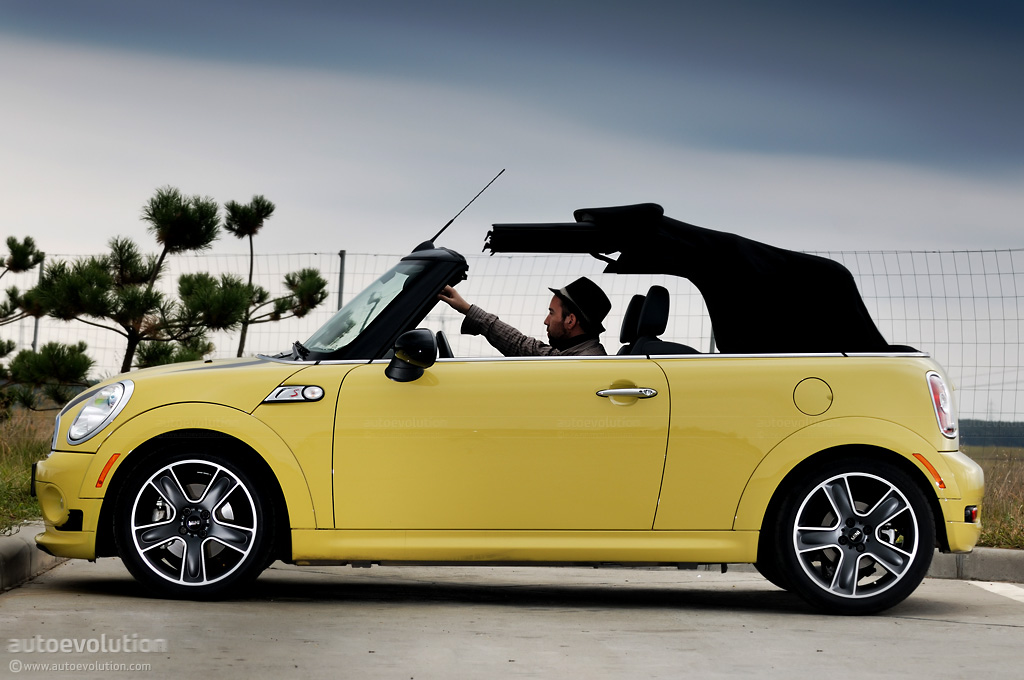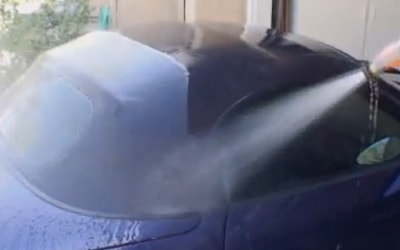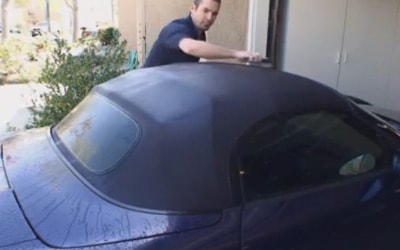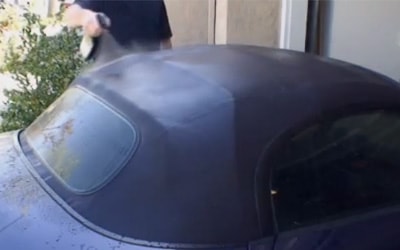You’ve got your first convertible and you’re buzzing with excitement. You take it for a ride along some winding mountain roads, the wind is blowing through your hair, the car stereo is humming in the background - not too loud so you can still listen to the engine music. What could possibly go wrong? Out of your zen moment you see in the rear view mirror a massive truck approaching fast and engulfed in a huge dust ball. You slow down and you raise the top just in time. Not a minute later, a light drizzle starts to fall and you can actually feel all the dirt seeping into your precious soft top. Some hours later, you get to your destination, park the car and enjoy some quality time away from the busy city. But hey, this is the country side and the day you get ready to leave you find your car virtually blanketed by bird droppings. So much for zen.
Before we get started, a few words on tops and convertibles. The term convertible refers to cars whose roofs retract and fold away, manually or automatically. Hardtop cars, known as coupé cabriolets or coupé convertibles, have their roofs made out of steel, aluminum or other forms of rigid materials, while soft-tops - known as cabriolets (or cabrios) or spyders - have their roofs made of textile material or vinyl. The hard ones are of course cleaned like the rest of the car’s surfaces, while the soft ones are a bit trickier, as you will soon find out.
The Process
Before we get to the nitty gritty, know that you can also use automatic car washes for your car, but only if they are fitted with hanging cloths; the brush type poses a serious risk to your top. Also, be careful not to have any wax sprayed on your roof.
Now, first of all, make sure you car is parked in a shaded area so you can have a slow evaporation. With the location secured, you can now go two ways to pre-rinse the soft-top. You can either use a power sprayer or you can go by hand, which is of course more cumbersome. Regardless of your option, never wash just an area or a spot; clean the entire top in one go. If you use a sprayer, make sure you set it to a low level and that you don’t spray too close to the material. This might wear the material faster.
If you choose the “manual” method, you need to purchase a soft scrub brush or a vinyl-friendly cloth. Always be gentle with your scrubbing motion. Don’t over do it or you might damage the material. It’s also recommended that you use warm water instead of cold one.
After the top is pre-rinsed, it’s time for the actual washing. Once again, you can go two ways. You can purchase a dedicated soft-top product or you can use a non-detergent-based auto shampoo that does not contain gloss-enhancing oil. In case you purchase a cleaning product from the likes of Renovo, RaggTopp or 303, you’ll have to follow the instructions written on the package. Speaking of soft top products, it's vital that they don't contain silicones, organic solvents, petroleum distillates or plasticizers.
After you apply the cleaning substance, you have to rinse the top using the same techniques as in the pre-rinsing stage.
OK, so now you have a clean, albeit wet soft top. It’s extremely important not fold the top while it is wet because you could end up with mildew growing on the surface and subsequently damaging it. After completely drying the top, you can now proceed to the last step of the cleaning process.
In case of the fabric top, it is extremely recommended to use a water repellent product which creates an extra layer of protection between the material and the elements. The protection is also effective against U.V. rays, smog, tree sap, bird droppings and dirt. There are also special vinyl substances, which can also be used for the top’s rear window.
Introduction
As you might have guessed, this article will guide you through the intricate maze of soft top cleaning. You might have read many opinions on how to do it and more often, what not to do, so we’ll try to get rid of all the false advice and give you a proper list of instructions on how to keep the vulnerable soft top as clean as possible.Before we get started, a few words on tops and convertibles. The term convertible refers to cars whose roofs retract and fold away, manually or automatically. Hardtop cars, known as coupé cabriolets or coupé convertibles, have their roofs made out of steel, aluminum or other forms of rigid materials, while soft-tops - known as cabriolets (or cabrios) or spyders - have their roofs made of textile material or vinyl. The hard ones are of course cleaned like the rest of the car’s surfaces, while the soft ones are a bit trickier, as you will soon find out.
The Process
Before we get to the nitty gritty, know that you can also use automatic car washes for your car, but only if they are fitted with hanging cloths; the brush type poses a serious risk to your top. Also, be careful not to have any wax sprayed on your roof.
Now, first of all, make sure you car is parked in a shaded area so you can have a slow evaporation. With the location secured, you can now go two ways to pre-rinse the soft-top. You can either use a power sprayer or you can go by hand, which is of course more cumbersome. Regardless of your option, never wash just an area or a spot; clean the entire top in one go. If you use a sprayer, make sure you set it to a low level and that you don’t spray too close to the material. This might wear the material faster.
If you choose the “manual” method, you need to purchase a soft scrub brush or a vinyl-friendly cloth. Always be gentle with your scrubbing motion. Don’t over do it or you might damage the material. It’s also recommended that you use warm water instead of cold one.
After the top is pre-rinsed, it’s time for the actual washing. Once again, you can go two ways. You can purchase a dedicated soft-top product or you can use a non-detergent-based auto shampoo that does not contain gloss-enhancing oil. In case you purchase a cleaning product from the likes of Renovo, RaggTopp or 303, you’ll have to follow the instructions written on the package. Speaking of soft top products, it's vital that they don't contain silicones, organic solvents, petroleum distillates or plasticizers.
After you apply the cleaning substance, you have to rinse the top using the same techniques as in the pre-rinsing stage.
OK, so now you have a clean, albeit wet soft top. It’s extremely important not fold the top while it is wet because you could end up with mildew growing on the surface and subsequently damaging it. After completely drying the top, you can now proceed to the last step of the cleaning process.
In case of the fabric top, it is extremely recommended to use a water repellent product which creates an extra layer of protection between the material and the elements. The protection is also effective against U.V. rays, smog, tree sap, bird droppings and dirt. There are also special vinyl substances, which can also be used for the top’s rear window.



